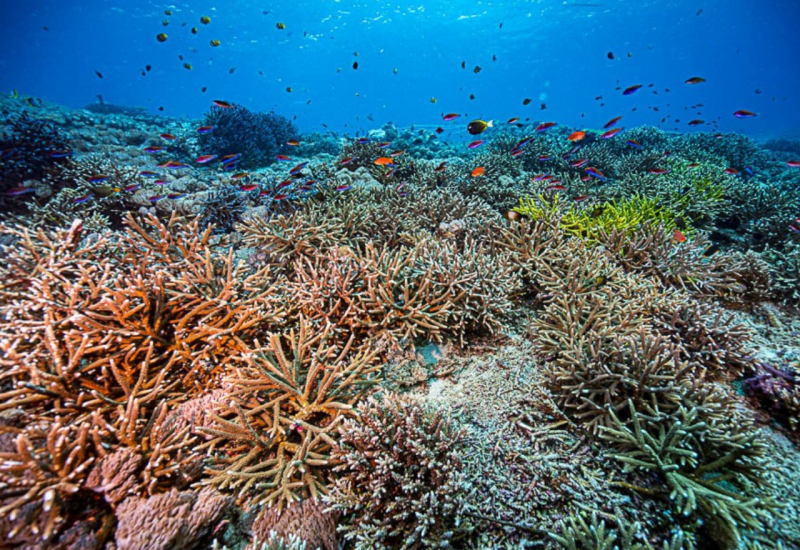Rescued Sea Turtle in Florida Keys Euthanized Due to Tumors Caused by Pollution
Despite more than a month of coordinated efforts to rescue Tenora, a juvenile green sea turtle, pollution-related issues made it difficult to save her. She presented with a large external tumor on her left shoulder, and CT scans and radiographs later revealed similar tumors on her lungs. Tenora was ultimately euthanized to lessen her suffering. Her ailments could serve as a warning about what’s happening in the waters she inhabited.
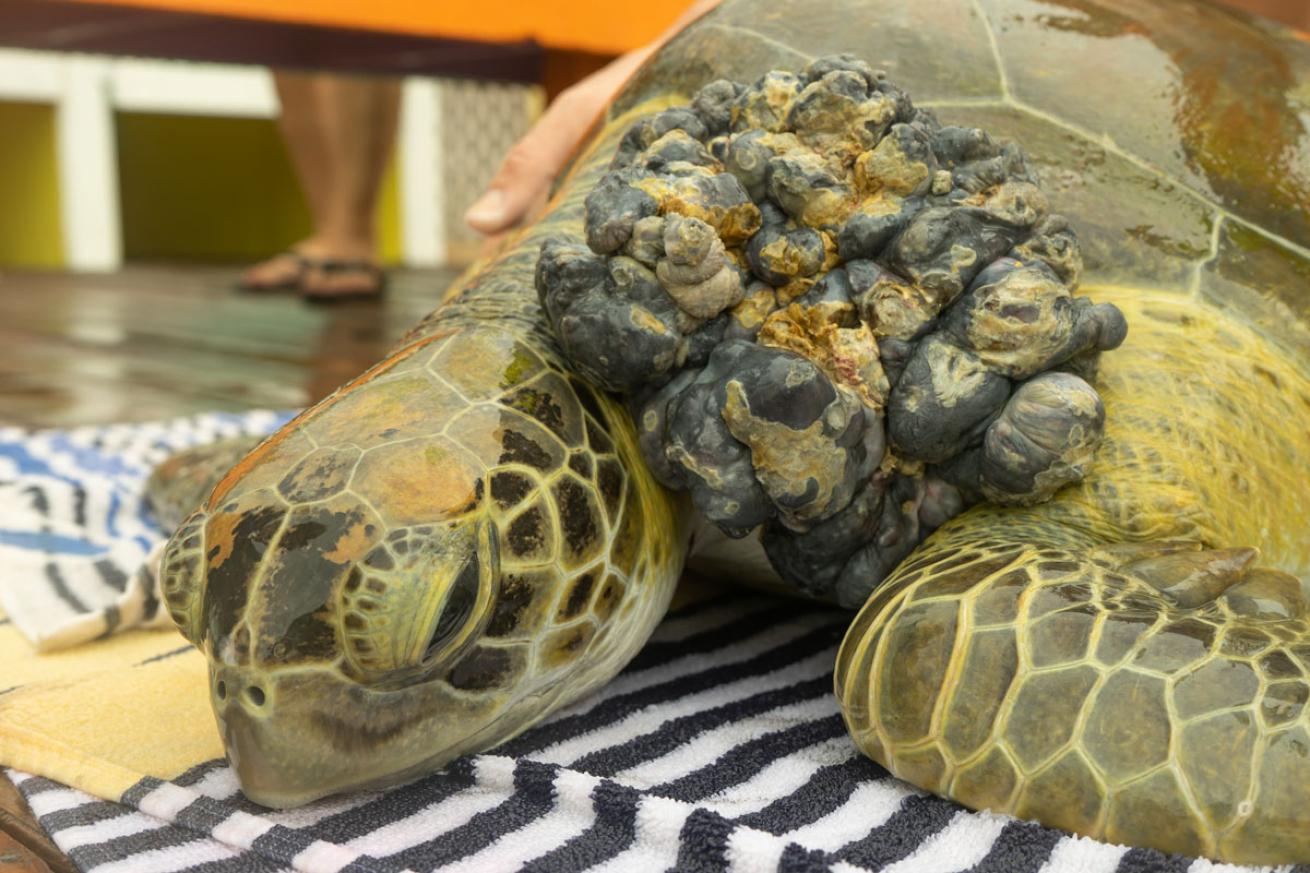
Tiffany Duong/Ocean RebelsFibropapilloma tumors in green sea turtles are most often found in and around developed islands around the world in warmer climates. Runoff and pollution from land enter the water and seagrasses that turtles eat, leading to tumor growth.
Tenora was brought in by Rainbow Reef Dive Center staff and customers on October 3 near the number ten mooring ball (hence her name) on Molasses Reef in Key Largo. The rescue team was led by PADI Instructor Josh Phillips who had made it his “personal mission” to help Tenora after seeing her with a softball-sized tumor out on the reefs. He connected with The Turtle Hospital, a nonprofit in the Florida Keys, for permission and guidance about how to rescue her.
After over a month of searching and failed attempts, Phillips was finally able to coax Tenora off a ledge 30 feet underwater and rescue her on a rainy Saturday. It took three divers to get Tenora up to the surface, where other staff helped get her on the boat.
“I’ve dealt with a few different types of rescues but this is the best one,” Phillips told Scuba Diving Magazine. “Turtles are one of the most amazing creatures, and I cannot even express the joy I feel right now. It’s a great day.”
Zarion Clements, another Rainbow Reef Instructor who helped with the rescue, said, “I love turtles so much. Seeing them like this, knowing what this disease can do to them, is really sad. Look at her, other than the tumor, she’s gorgeous.”
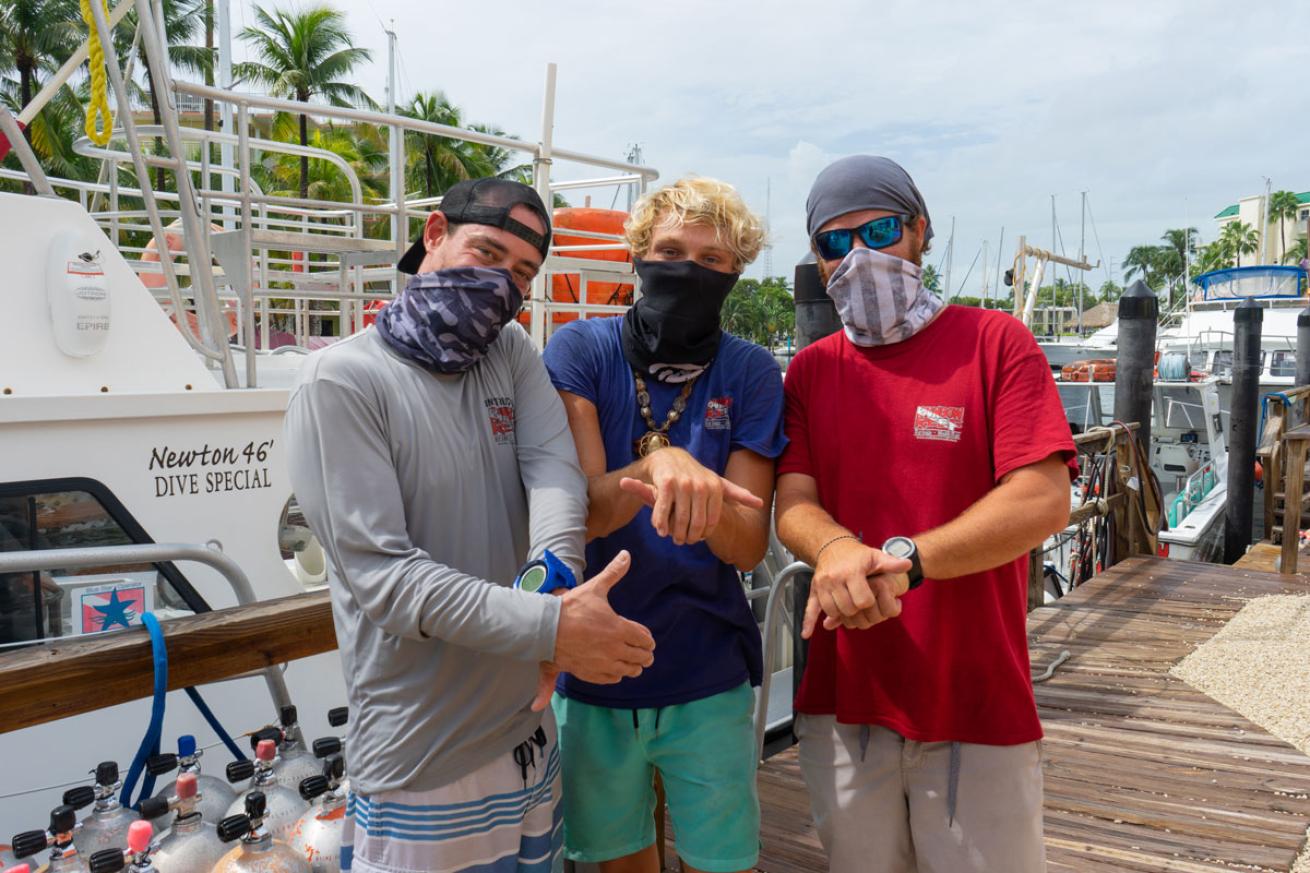
Tiffany Duong/Ocean RebelsRainbow Reef Instructors Josh Phillips and Zarion Clements and captain Jack Steenburgen hold up the dive signal for “turtle” after rescuing Tenora, a juvenile green sea turtle.
The rescue left all involved on a high, and Phillips said the experience made him consider his purpose for living.
“When I was underwater after the dive, it made me think that wildlife conservation is something I should look into,” he said. “This is the most amazing day of my life. It’d be life changing for anyone to be involved in an experience like this. It certainly was for me.”
Shelby Ferguson of The Turtle Hospital met the boat at the dock to bring Tenora in for evaluation and care. Ferguson explained that green sea turtles are the species most susceptible to the virus that causes fibropapilloma (FP) tumors like the one Tenora had.
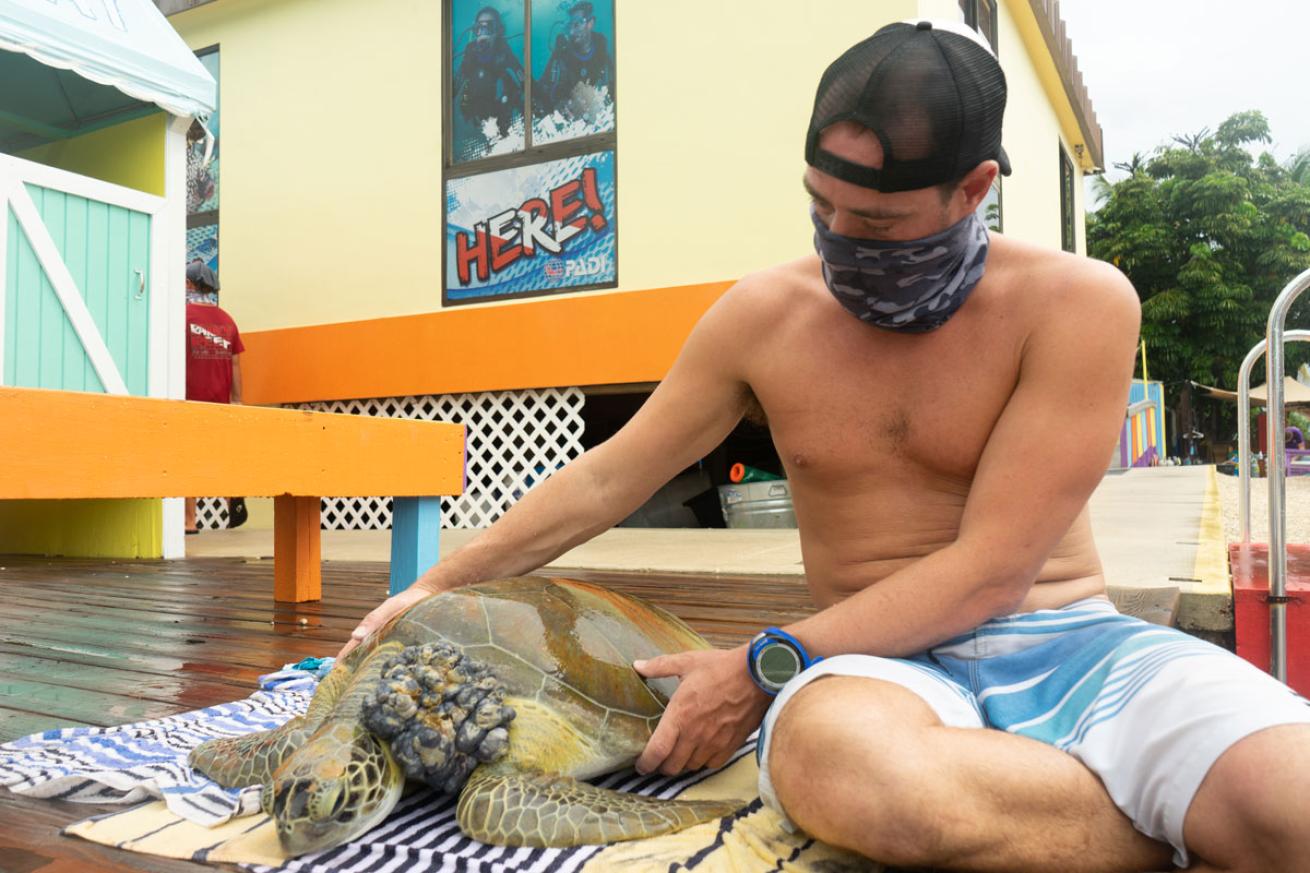
Tiffany Duong/Ocean RebelsTenora, a juvenile green sea turtle, waits with Josh Phillips, her rescuer, for The Turtle Hospital ambulance to arrive.
“Green sea turtles are the ones that get the virus the most and have the tumors the most because of what they eat,” Ferguson said. “They eat a lot of seagrasses and algae, and those are the natural filters of the ocean, so they filter the pollutants. Unfortunately, the turtles eat those, which depresses their immune system, and the virus is able to take over and the tumors really explode.”
Generally, she said, the more polluted the water, the more turtles present with FP tumors. Bette Zirkelbach, manager at The Turtle Hospital, explained why this is true across the globe.
“Fibropapillomatosis is found in and around developed islands around the world in warmer climates. This tells us everything we need to know,” Zirkelbach said. “Many variables affect this disease, including water quality, temperature and life stage of the animal.”
In Hawaii, nitrogen runoff from pineapple farms increases the disease incidence in green sea turtles near the islands, Zirkelbach explained. Scientists there first made the link between poor water quality and increased FP tumors in green sea turtles. The Turtle Hospital is building on this knowledge by leading an in-water scientific study on sea turtle health in the Florida Keys for the next three years, she added.
While external masses can be surgically removed with a CO2 laser, there is currently no treatment for internal FP tumors in sea turtles, so animals like Tenora with internal growths are humanely euthanized to minimize their suffering, Zirkelbach said.
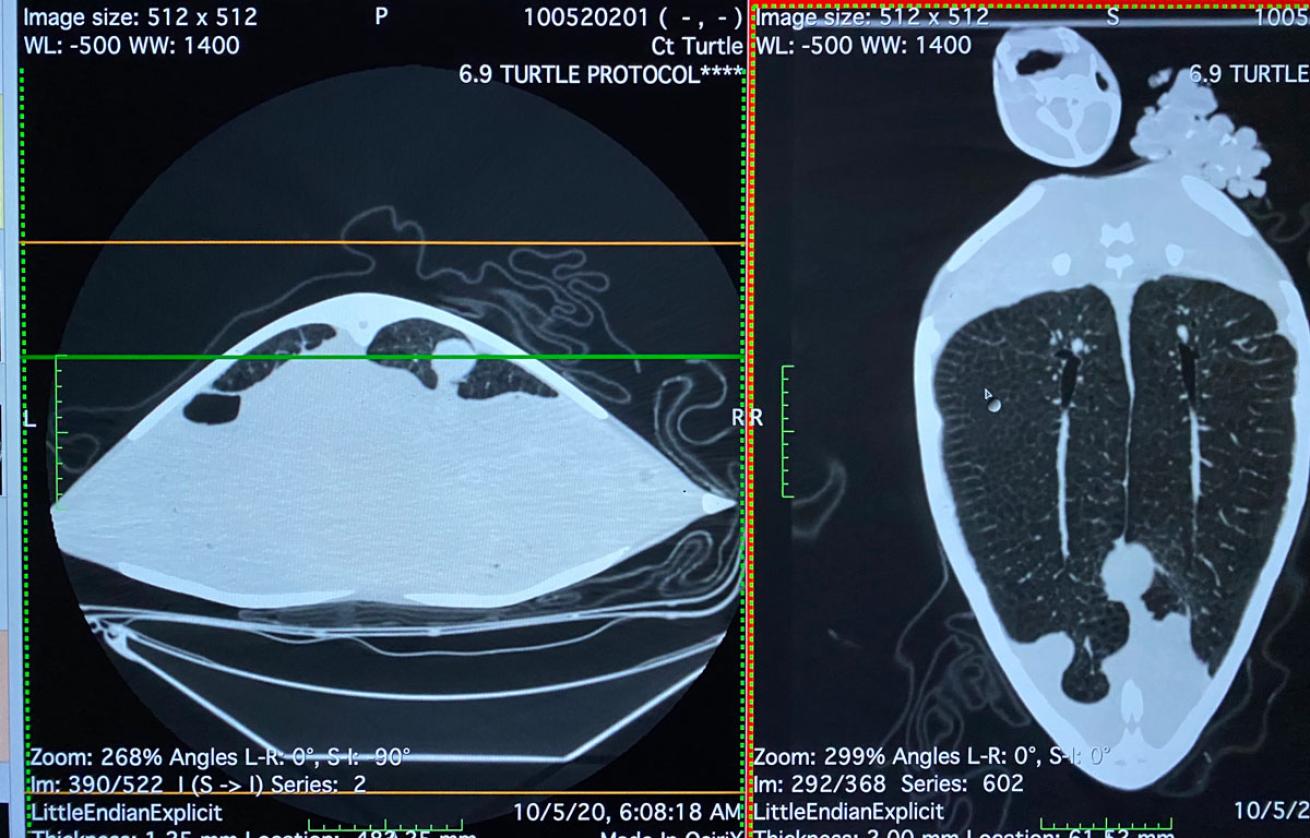
Tiffany Duong/Ocean RebelsTenora’s CT Scan from The Turtle Hospital revealed internal fibropapilloma tumors in her lungs that necessitated her to be euthanized to minimize her suffering.
“Sea turtle fibropapilloma tumors in sea turtles have been found to share genomic drivers and therapeutic vulnerabilities with human cancers,” Zirkelbach said, referring to new studies the hospital is involved with to test electrochemotherapy treatments on internal tumors. “It is an exciting time in sea turtle medicine!”
Phillips reflected on Tenora’s loss, saying “I think it’s horrible to consider that this is mostly caused by humans. It’s sad and you wonder if this is something that can be controlled or reversed in time.”
He urged everyone, “Wake up. Do better. We’re all in this together, and if we don’t try to change how we live our lives, things aren’t going to get any better. This is our chance to do something today for the next generation.”
Zirkelbach warned that “sea turtles are an indicator species for our marine ecosystems” and a measure of the overall health of the oceans. She urged everyone to pay attention and better manage land and marine ecosystems to begin tackling the causes of some of their ailments.
“What we see happening to sea turtles’ health will eventually affect all life on earth,” she warned. “Sea turtles have survived our planet for over 110 million years. We, humans, have a responsibility to not let them go extinct on our watch.”



